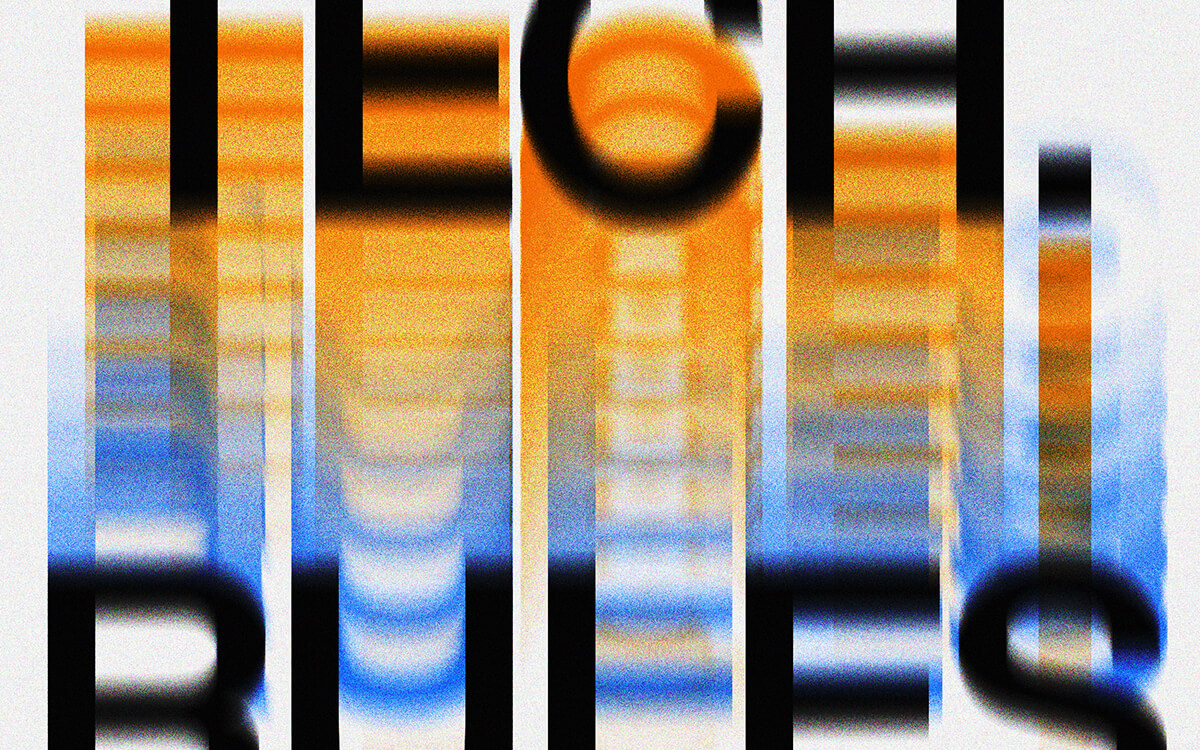October 30, 2025
A great deal of commercial attention is given to new technologies. This obvious truth makes sense given that new technologies can disrupt existing markets thereby creating opportunities for new companies, new industries, and the creation of new wealth for those who start and invest in these endeavors. However, the rush to commercialize disruptive technologies is accompanied by the need to create a new set of rules for how such technologies fit into existing society. For the most part, the rule-making process lags the technology-making process. Again, this simple truth makes sense as most technologies are widely-available, there is comparatively little incentive to create rules to deal with their impact. This pattern invariably leaves a “rule gap” that can take some time to fill.
The consequences of this rule gap are not academic. Consider the automobile, which spent decades as an essentially unregulated technology before society caught up with seat belt laws, emission standards, and drunk driving penalties. In the interim, the death toll mounted. Or consider social media platforms, which operated for more than a decade under the assumption that they were neutral conduits of information rather than publishers, curators, or attention merchants—a regulatory fiction that only began to crumble after measurable damage to democratic institutions and adolescent mental health.
What makes the rule gap particularly vexing is that it emerges not from malice or incompetence, but from the fundamental asymmetry between innovation and governance. Innovation moves at the speed of capital and ambition. A determined entrepreneur with sufficient funding can deploy a new technology to millions of users in months (or more recently, in just days). Governance, by contrast, moves at the speed of consensus and deliberation. It requires public debate, legislative drafting, bureaucratic implementation, and judicial interpretation—a process that can easily span years (or decades).
This asymmetry creates what might be called a “first-mover advantage in chaos.” Companies that deploy disruptive technologies early benefit from operating in an environment where the rules have not yet been written. They can experiment, iterate, and scale without the friction of compliance costs or regulatory oversight. By the time regulators arrive on the scene, these companies have often become so large, so economically entrenched, and so politically influential that the rules eventually written tend to accommodate their business models rather than constrain them.
The technology industry has, unsurprisingly, developed a sophisticated rhetoric around this dynamic. They speak of "innovation" as though it were an unalloyed good, of "disruption" as though it were inherently progressive, and of regulation as though it were synonymous with stagnation. The implicit argument is always the same: move fast, worry about consequences later, and trust that any problems that emerge can be solved with more technology. It is, in essence, a theology of progress that treats rule-making as an afterthought at best and an obstacle at worst.
But, this narrative obscures a more complicated reality. Rules are not the enemy of innovation; they are a crucial social technology that allows us to harness innovation's benefits while managing its harms. Patent law and contract enforcement create the stable environment in which investment can flourish. Safety regulations prevent the market from becoming a perpetual consumer experiment. Labor laws ensure that the gains from productivity improvements don't accrue entirely to capital. Without such rules, we don't get innovation in its purest form. Instead, we get a Hobbesian marketplace where might makes right and externalities run rampant.
The challenge, then, is not whether to create rules but how to create them intelligently and expeditiously. Here the record is mixed at best. Too often, the rule-making process becomes captured by the very industries it is meant to regulate, producing regulations that favor incumbents and raise barriers to entry. Or it produces rules that are so technology-specific that they become obsolete almost immediately, crafted for the last technological revolution rather than the current one.
The European Union's General Data Protection Regulation (GDPR) represents one model: comprehensive, principle-based legislation that establishes broad rights and obligations applicable across multiple technologies. Critics argue it stifles innovation with its compliance burdens. Defenders counter that it creates a level playing field and gives users meaningful control over their information. The truth, as usual, lies somewhere in between but GDPR at least represents an attempt to write rules at the same level of abstraction as the technologies they govern.
Another approach involves what legal scholars call “experimental governance” embracing regulatory sandboxes, sunset provisions, and adaptive frameworks that allow for learning and adjustment over time. This model acknowledges that neither regulators nor companies fully understand a new technology's implications at its outset. Rather than attempting to write perfect rules in ignorance, it creates processes for iterative rule-making informed by real-world experience.
Yet even these sophisticated approaches struggle with a deeper problem: the geography of technology no longer maps neatly onto the geography of governance. A social media platform operates globally. Data flows across borders at the speed of light. Artificial intelligence models are trained on datasets drawn from dozens of countries. But rule-making remains stubbornly national, producing a patchwork of conflicting requirements that companies must navigate and jurisdictions must enforce. The rule gap, in this sense, is not just temporal but spatial—a gap between the borderless nature of digital technology and the bordered nature of political authority.
This mismatch suggests that closing the rule gap will require not just faster regulation but different kinds of regulation. It will require international coordination of the sort that produced technical standards like USB and Wi-Fi, but applied to questions of rights, responsibilities, and acceptable risk. It will require building a different regulatory capacity within government that includes not just lawyers and economists, but technologists who can understand what is actually possible and advisable. And it will require a cultural shift in how we think about the relationship between innovation and constraint.
The libertarian fantasy that the internet interprets censorship as damage and routes around it has given way to a more sobering realization: technology platforms are not neutral, markets are not self-correcting, and innovation without governance produces not utopia but a different distribution of power and harm. The question is not whether we will have rules; we will always have rules, whether written into law or encoded into algorithms. The question is who writes those rules, in whose interest, and through what process.
As we confront the next wave of disruptive technologies — artificial intelligence, biotechnology, quantum computing — we have a choice. We can continue to treat rule-making as an unfortunate necessity that follows innovation at a respectful distance. Or we can recognize that the rule gap itself is a design choice, one that privileges velocity over deliberation and private gain over public good. The goal of closing that gap should not be to slow innovation but rather to channel it in directions that serve not just shareholders but citizens more broadly.
The work of democracy has always been to take the raw material of human capability and shape it into something approaching the common good. New technologies are simply the latest raw material. The gap between innovation and regulation is not inevitable. It is the space we have collectively chosen to leave open, and we can choose to close it.
– Geoffrey W. Smith
First Five
First Five is our curated list of articles, studies, and publications for the month.
1/ Breakfast time may predict how long you live
“Meal timing shifts with age, and researchers found that eating breakfast later is tied to depression, fatigue, sleep problems, and an increased risk of death. Monitoring when meals are eaten could provide an easy health marker for aging adults.”
Read more here >
2/ Dehydration fuels anxiety and health problems
“Not drinking enough water could intensify stress responses. Researchers found that under-hydrated individuals had cortisol levels more than 50% higher during stressful situations. Poor hydration didn’t make participants feel thirstier, but it did trigger biological signs of strain. Keeping a water bottle handy could help manage stress and safeguard health.”
Read more here >
3/ How and when to involve crowds in scientific research
“This book explores how millions of people can significantly contribute to scientific research with their effort and experience, even if they are not working at scientific institutions and may not have formal scientific training.
Drawing on a strong foundation of scholarship on crowd involvement, this book helps researchers recognize and understand the benefits and challenges of crowd involvement across key stages of the scientific process. Designed as a practical toolkit, it enables scientists to critically assess the potential of crowd participation, determine when it can be most effective, and implement it to achieve meaningful scientific and societal outcomes.
The book also discusses how recent developments in artificial intelligence (AI) shape the role of crowds in scientific research and can enhance the effectiveness of crowd science projects.”
Read more here >
4/ Is information a fundamental force of the Universe?
“Are the laws of classical physics as we currently understand them missing something important about how the Universe works? This radical notion lies at the heart of a new proposal by the mineralogist Robert Hazen and the astrobiologist Michael Wong at Carnegie Science in Washington, DC. In this short documentary, they explain why they believe a ‘law of increasing functional information’ could help us better understand why everything from atoms to cells to civilisations seems to grow more complex and orderly over time. They suggest that, if information is as fundamental as mass or energy, it could not only account for the similar ways so many systems appear to behave, but also help physicists make sense of the concept of time, which remains elusive in current models.”
Watch more here > and read more here >
5/ Quantum supremacy?
Researchers keep chipping away at the barriers to functional quantum computing. This paper claims to “indicate a viable path to practical quantum advantage.”
Read more here >
Did You Know?
In this section of our newsletter, we seek to demystify common terms and practices in our work as investors.
How VCs Support Their Portfolio Companies
Venture capital firms support their portfolio companies through a variety of means beyond just providing funding. This includes strategic guidance, operational support, and access to valuable networks. By actively assisting their portfolio companies, venture capital firms aim to increase the likelihood of success and maximize returns on their investments. In addition, VC's can provide helpful mentorship to founders, risk managemnt and monitoring, as well as legitimacy and credibility to the business.
– Haiming Chen & Dylan Henderson
To subscribe to Engineering Biology by Jacob Oppenheim, and receive newly published articles via email, please enter your email address below.







